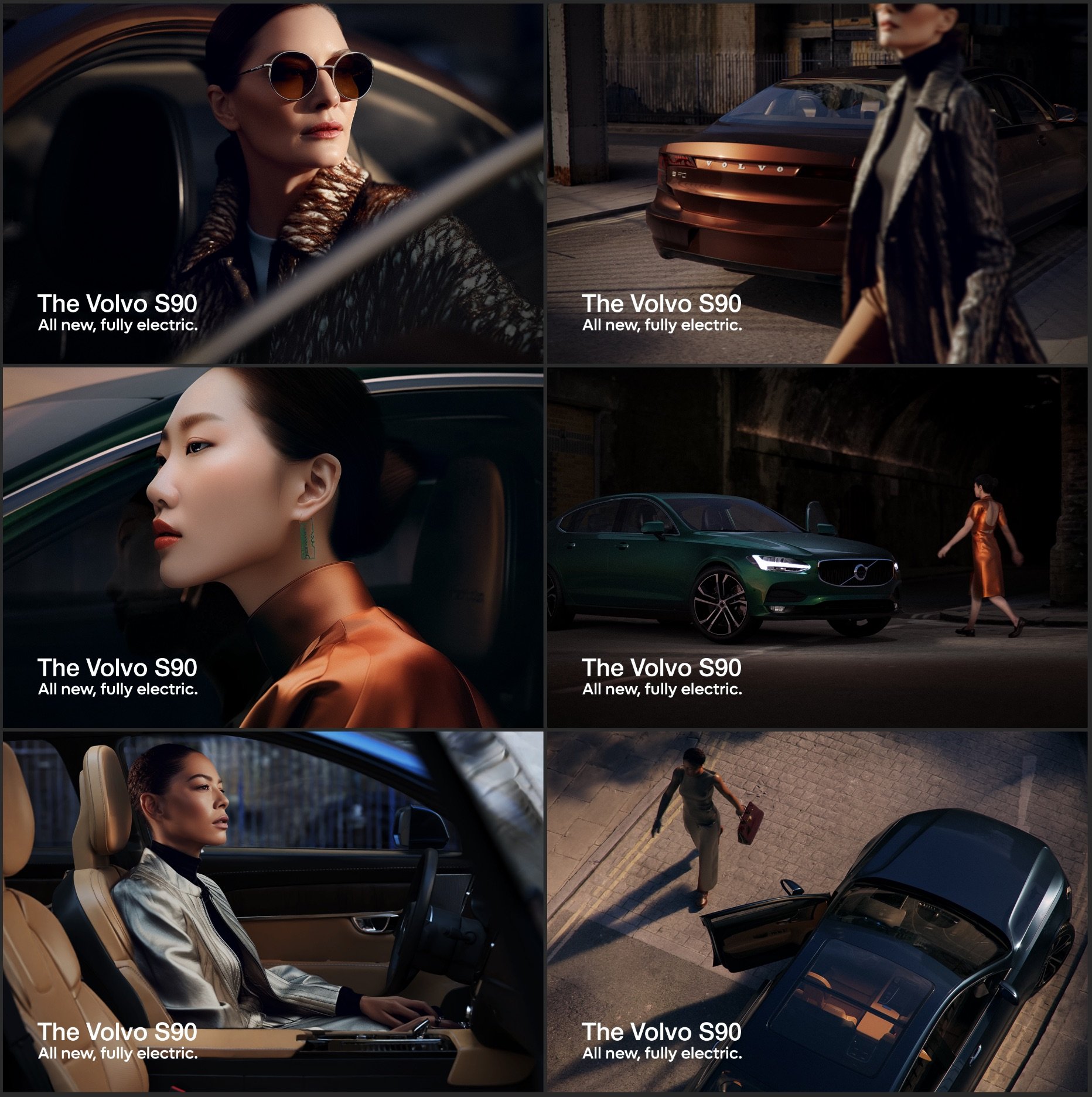AI Augmented Campaign
Spec Work
May 2023
With the rise in usage of AI image generators like MidJourney and Stable Diffusion, it is fast becoming commonplace to see creatives offering ‘one-click’ brand collateral. By using prompts it is indeed possible to create amazing looking imagery at a rapid rate, but to make it a long term commercially viable part of a digital designer’s pipeline the client’s product still needs to be showcased front and center, and done so in an accurate and editable way.
For this exercise I took a hypothetical brief of a brand like Volvo needing some rapidly generated images for a social media campaign to market test some new color options. This is a perfect opportunity to use AI as the product is still conceptual and the budget low.
Below is a quick walk through of the iterative process and final images.
The brief and references
An initial round of creative exploration to agree on key requirements of the brief. Characters, lighting, camera angle, image composition, attitude and ambience are all communicated through traditional methods - the tried and tested moodboard.
MidJourney bulk image creation
Working from the moodboard and references of the car model and colors, I generated a large amount of high level options (100+) within an hour.
This is a critical point where this process can move from at best being seen as generative art and at worst, a scatter gun of visual noise. To make AI content more commercially viable images need to be selected not only for their visual appeal but for their ability to plausibly and seamlessly integrate the client’s product.
Interactive and iterative selection process
From over 100 initial options I was able to refine the selection down to 15 appropriate images. These 15 are also run through a round of fine tuning where each version presents different randomly generated faces, clothing or hand placements. The best of these second generation images became the primary selects. From there 3 characters were chose to move forward with for this project.
2D to 3D character creation
Each of the chosen characters are fed back into AI generators and theoretical front, side and 3/4 views of them are created.
These additional angles are used to create an accurate 3D model of the character, and Photoshop is used to clean up the textures and make their faces ready for 3D scenes.
The 3D characters are used in a camera matched scene for accurate shadow casting and reflection on the correct Volvo 3D car.
Final Images
Taking only 4 days from moodboard presentation to final delivery of 6 x social media ready 2k photorealistic images the results are comparable to a 2-3 week traditional timeline. This proved to be a perfectly viable option for projects where the timeline is short and the requirements are one level below a full photographic campaign.
With additional time and budget each aspect could be pushed further to arrive at magazine quality images indistinguishable from a complete photo shoot.




